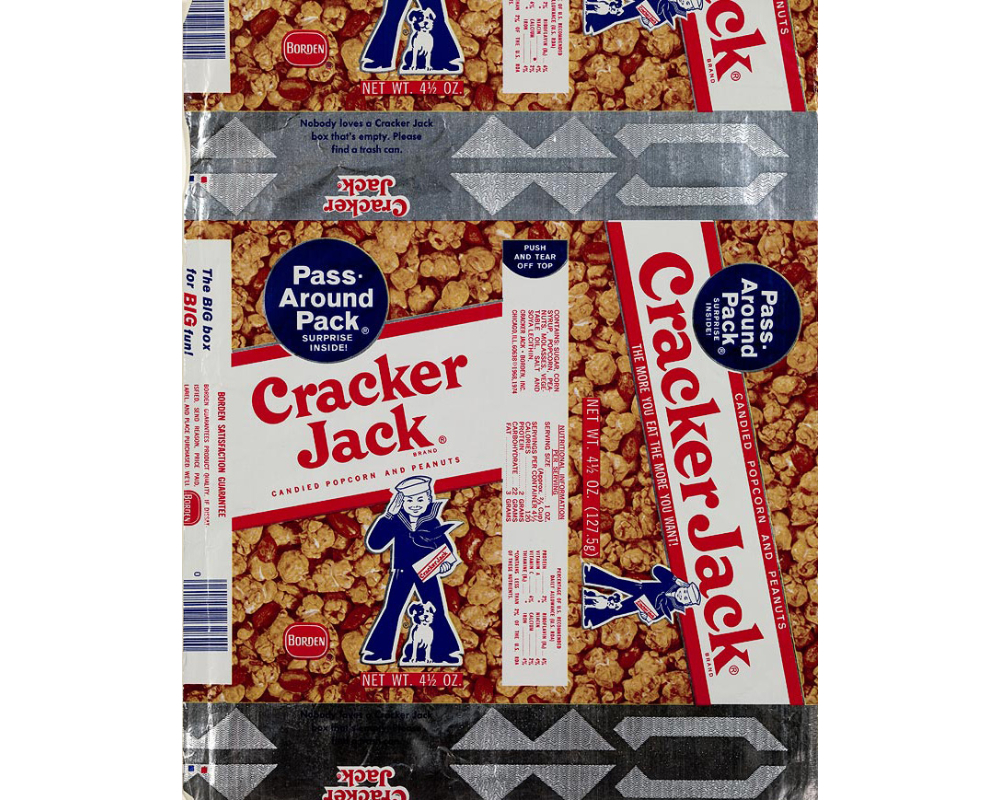
From 'Canyon' to 'Crackerjack': What You See is What You Don’t
Guest blogger Laura Romeyn was a 2012 participant in the Summer Institute in Art Museum Studies (SIAMS) at Smith College. Laura is a current graduate student at Columbia University.
My summer as a SIAMS student provided me with a comprehensive and intensive education in museum studies. Both my time on the road and my days on campus afforded me unique opportunities to perfect my interpretive skills. Two art encounters in particular; the viewing of Robert Rauschenberg’s Canyon, and Title Sheet from Crackerjacks by artist Lorie Novak and an unidentified colleague, tested my ability to make connections between otherwise disparate works of art.
Earlier this summer I learned of the controversy surrounding Rauschenberg’s ‘combine’ work, Canyon. The term ‘combine’ describes a style of collage that incorporates found materials with two-dimensional paintings on canvas. Canyon is unique in that the stuffed bird atop the canvas happens to be an eagle. Under federal laws that prohibit the traffic in bald eagles (including their remains), Rauschenberg’s Canyon cannot be legally bought or sold. Yet the IRS is demanding that the heirs of the piece’s collector pay over $40 million in taxes.
I wasn’t aware that the Metropolitan Museum of Art was housing this ‘bald eagle-turned white elephant,’ (as ART news so aptly describes it), until I stumbled upon the controversial piece within the 20th-century galleries. Canyon is currently on long-term loan at the Metropolitan Museum, while my own subject of inquiry this summer, Title Sheet from Crackerjacks, permanently resides in the Smith College Museum of Art.
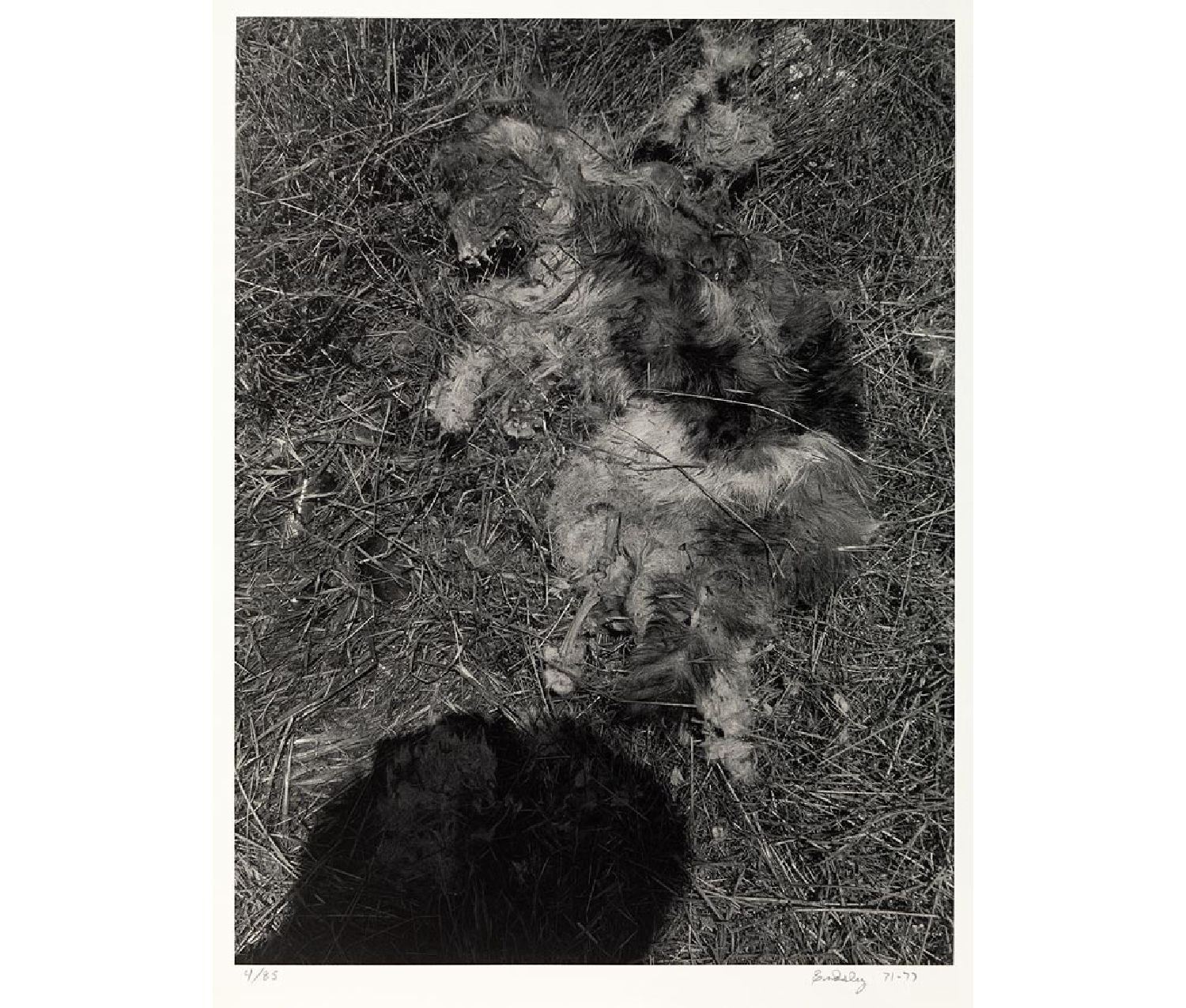
Fred Endsley. American, b. 1974. Untitled from Crackerjacks, 1971–77. Gelatin silver print. Gift of Nancy Waller Nadler, class of 1951. Photograph by Petegorsky/Gipe. SC 2007.34.1.15.
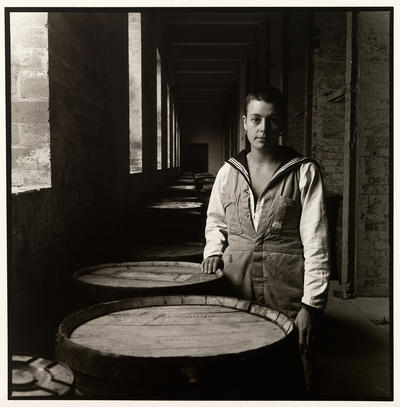
Unknown. American. Unknown from Crackerjacks, 1977. Gelatin silver print. Gift of Nancy Waller Nadler, class of 1951. Photograph by Petegorsky/Gipe. SC TR 6932.56.
Title Sheet is the opening work from Crackerjacks, a 1977 graduate photography portfolio from the School of the Art Institute of Chicago. Title Sheet appears to be a flattened Cracker Jack box framed for the wall, but in reality is a painstaking reproduction of the familiar snack box. Although Title Sheet features advertising slogans like “nobody loves a Cracker Jack box that’s empty,” the real surprise lies in the contents of the larger portfolio. The box that contains Title Sheet houses fifty-nine additional photographs. Images alluding to Sailor Jack and Bingo are presented through a pile of mangled dog fur and bone and in the photo of a woman with a buzzed head wearing a sailor suit. A single syringe taped to a sheet of white paper prefaces a Xerox color transfer of the jaunty sailor duo declaring, “gosh isn’t life fun.” This frank packaging of contemporary culture concludes with an image of a howling wolf.
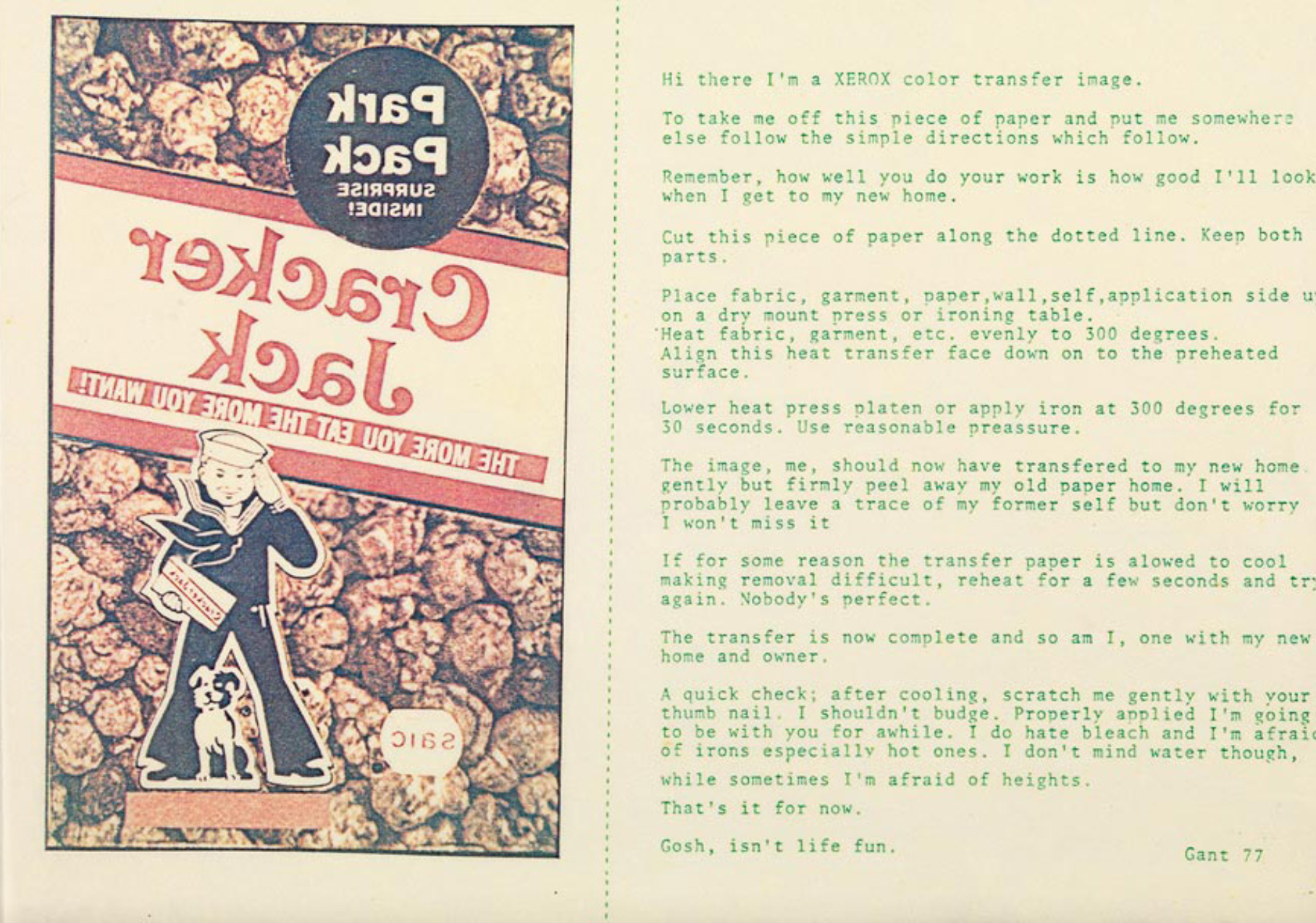
Rus Gant. American. Hi there I’m a XEROX color transfer image…from Crackerjacks, 1977. Xerox color transfer image on paper. Gift of Nancy Waller Nadler, class of 1951. Photograph by Petegorsky/Gipe. SC 2007.34.1.21.
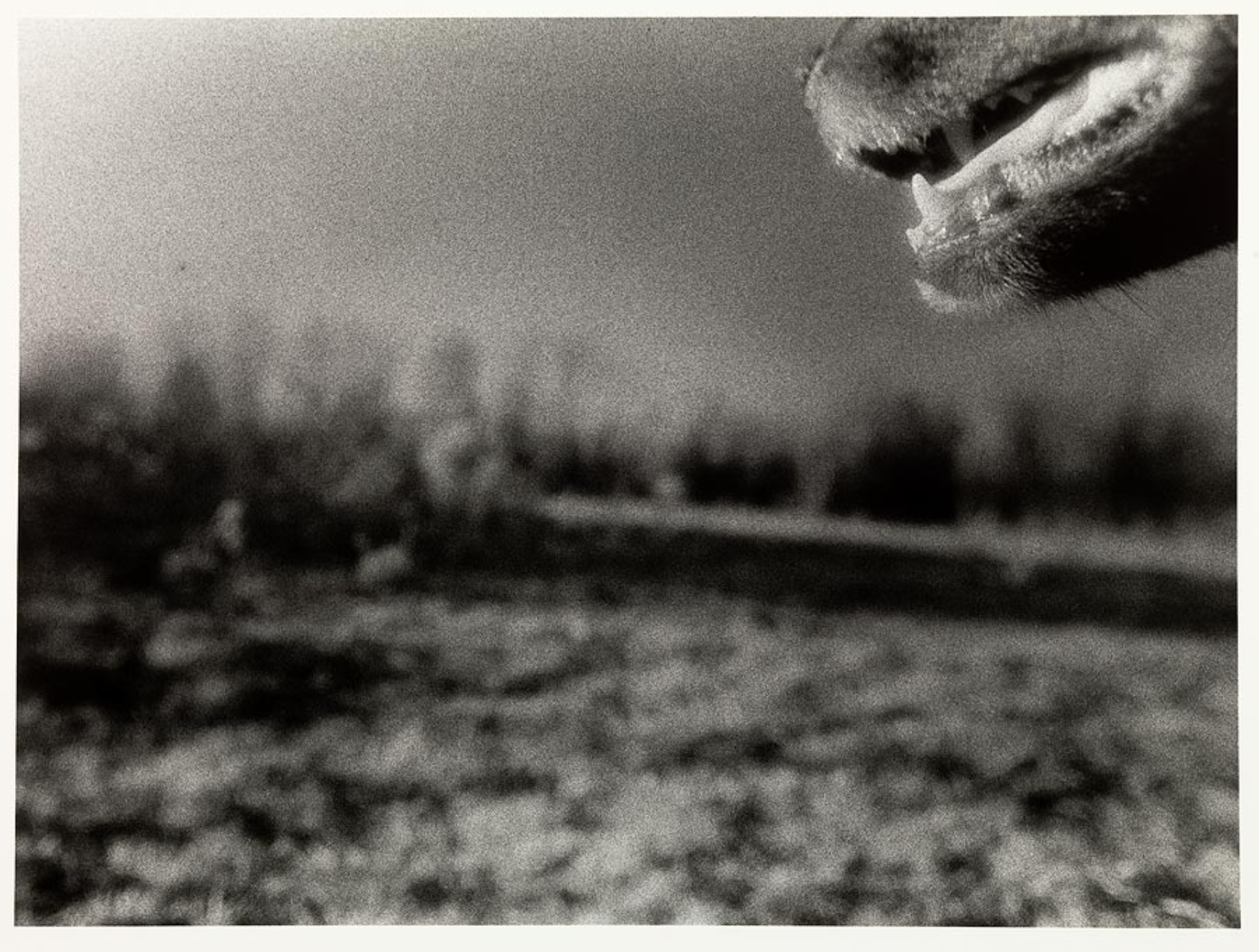
Diana Olson. American, b. 1954. Untitled from Crackerjacks, January 1977. Gelatin silver print. Gift of Nancy Waller Nadler, class of 1951. Photograph by Petegorsky/Gipe. SC 2007.34.1.41.
Unfortunately, immediate viewers of Title Sheet don’t have access to the accompanying works in the larger portfolio, and the implications of Title Sheet are enhanced by the additional contents. Yet situated as a single work, Title Sheet commemorates how simple desires were once contained. By recreating the box though the labor-intensive process of photolithography – a printing method using plates made after a photograph – the artists render this everyday, throwaway Cracker Jack box one-of-a-kind.
Just as it can be said of Crackerjacks, the imagery in Canyon evokes nostalgia in the viewer. Large newspaper print letters and political posters are smeared and painted-over to create a dated effect. A rusty metal box has been opened, flattened, and then collaged, encouraging inquiry into the commonplace. Rauschenberg’s eagle extends into the space of the viewer while Title Sheet takes on a thematic space greater than the constraints of its framing.
On a purely aesthetic level, these two works of art have little in common. Viewers of our SIAMS exhibition, Outside the [Box] will view Title Sheet as the introduction to a discourse on consumerist culture, and knowledge of the accompanying portfolio isn’t requisite for enjoyment. Viewers of Canyon may have no knowledge of the current tax debate surrounding this work, and perhaps that’s just as well. Both Canyon and Title Sheet position contemporary art as an invitation to interpret, and a work’s immediate aesthetic impact is often just as powerful as its external implications.